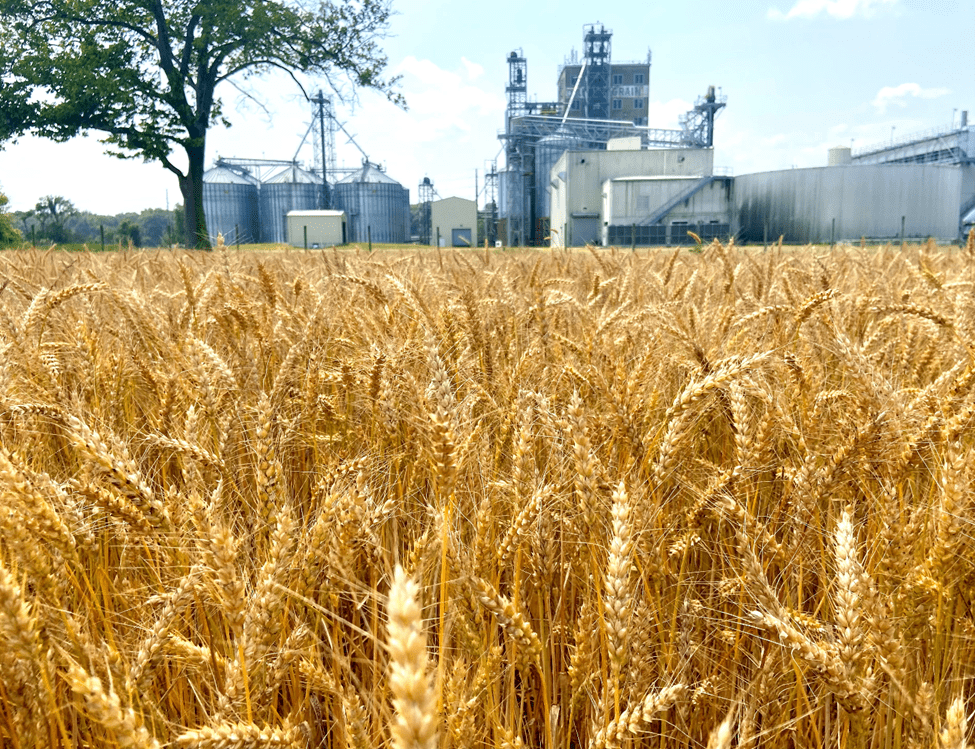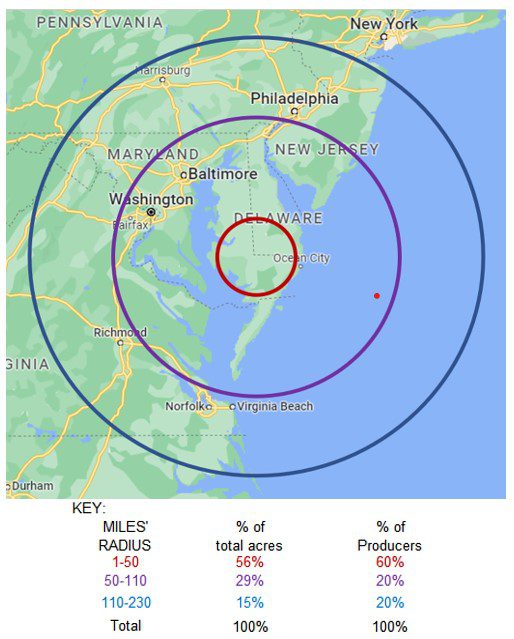Subscribe to Our Mailing List
Get the latest news and updates with our Proximity Malt newsletters.
 PART OF THE SUSTAINABILITY PUZZLE
PART OF THE SUSTAINABILITY PUZZLE
Proximity’s Mid-Atlantic wheat malt is made from soft winter wheat grown in the Delmarva Peninsula and thereby local to our Laurel, DE malthouse–it’s a sustainability powerhouse!
It’s easy to see that sourcing grain locally drives miles out of our supply chain and thereby reduces our GHG emissions and carbon footprint. Proximity is ideally located to grow malting grains. Check out the map below to understand the regionality of our growers in the Mid-Atlantic.
But winter grains – both barley and wheat–are also popular with farmers for their regenerative characteristics. Winter grains are planted in the fall after the corn and soybeans are harvested. Like all plants, these grains absorb CO2 from the air and release oxygen throughout their growing season, from planting in October to harvest in mid-June.
Winter wheat is planted in the fall after the corn and soybeans are harvested. Like all plants, winter wheat absorbs CO2 from the air and releases oxygen throughout its growing season from about October to mid-June. Wheat (and barley) has relatively deep root systems that amplify those benefits. In addition to acting as a carbon sink, wheat as a cover crop (crops that are planted after the harvest of a last crop for the protection and enrichment of the soil) reduces soil erosion, slows the leaching of agrichemicals into the surrounding watersheds and is central to the regenerative agriculture movement.
You can learn more about regenerative agriculture on our website. In addition to the benefits to the environment, our farmers really appreciate growing winter barley and wheat as it allows them to plant a short-cycle soybean after winter crop harvest and reap the financial benefits of two crops in one annual cycle.
Here’s the bottom line – Winter crops and no-till agricultural practices encourage biodiversity, improve farmland ecology and contribute to reversing climate change. Buy Mid-Atlantic wheat and save the world. But what about its malt characteristics?

A COST-EFFICIENT OPTION
Sampling a pile of kernels of each side by side, you might note a slight difference in color between the Mid-Atlantic and white raw wheat. But when milled for an ASBC Congress Mash, the two wheat grists are similar in color, as are the finished wort color. In a hot steep between our Mid-Atlantic wheat and the white wheat, both taste sweet and well-rounded, with a slightly drier finish noted in the Mid-Atlantic wheat.
So, how does Mid-Atlantic wheat brew? Just like you would expect from a white wheat malt: The substition ratio is 1:1, so swapping it into your recipe is easy. And, full sensory evaluations, malt analysis, and customer results reveal that replacing Mid-Atlantic Wheat for white wheat malt in any grain bill will yield nearly identical flavors and brewhouse performance.
Most importantly, with the wheat fields close to the malthouse, Proximity’s Mid Atlantic Wheat Malt isn’t only environmentally awesome…it can also save you money on your grain bill without impacting brewing performance.
